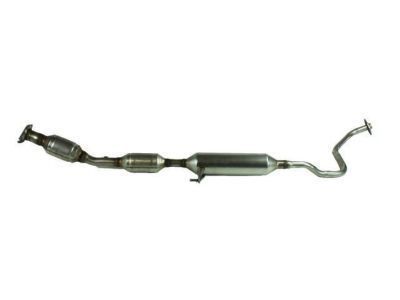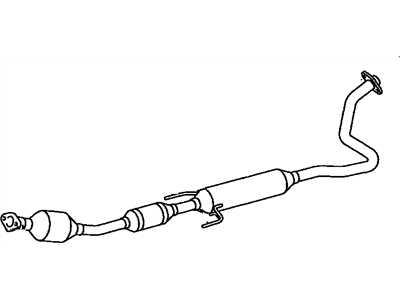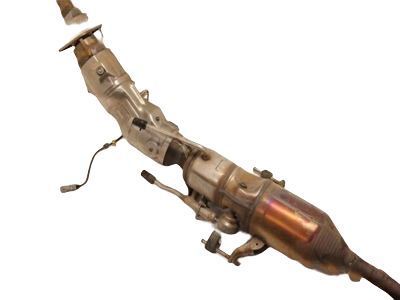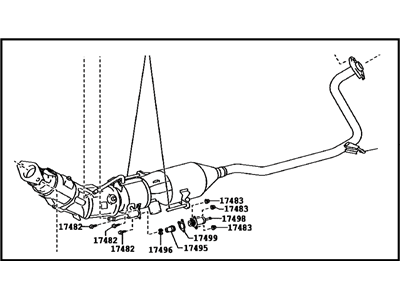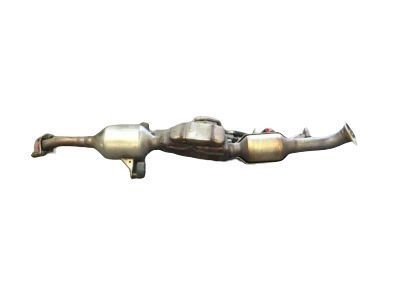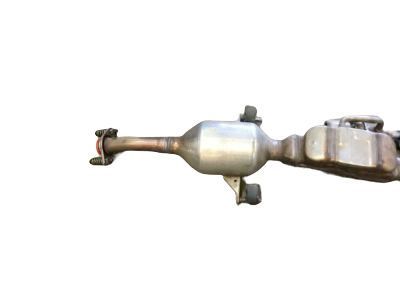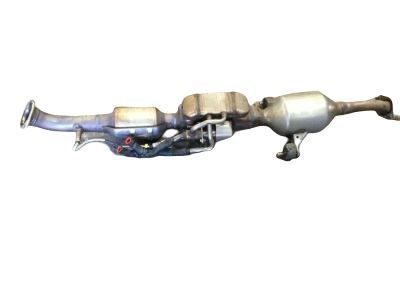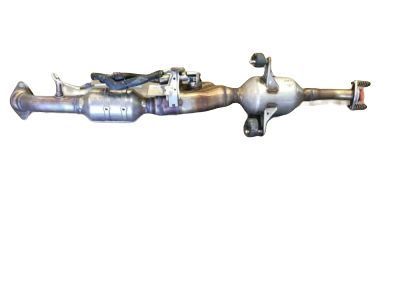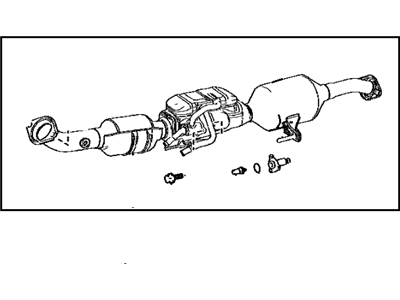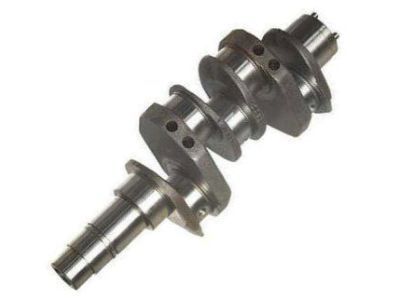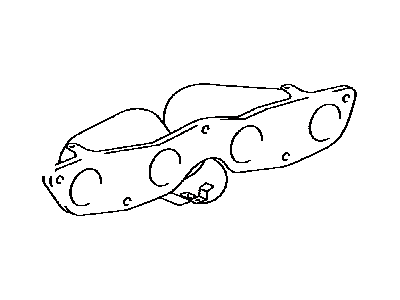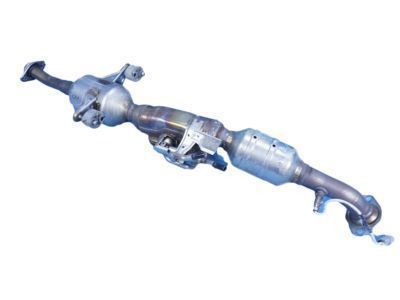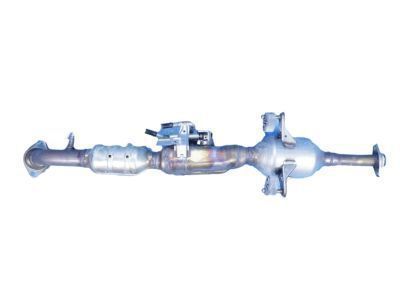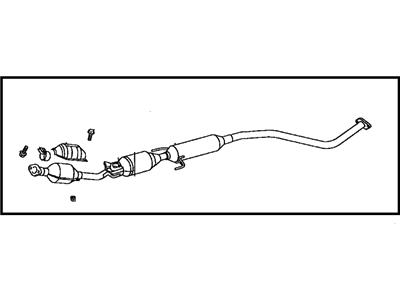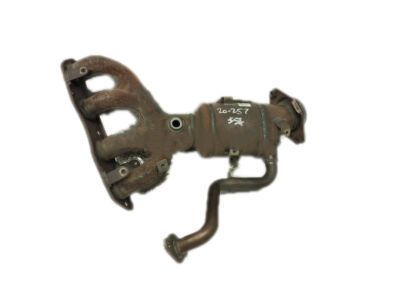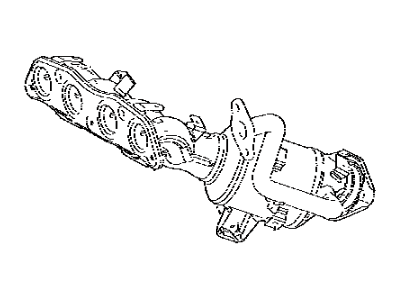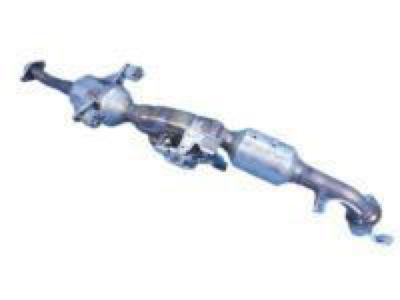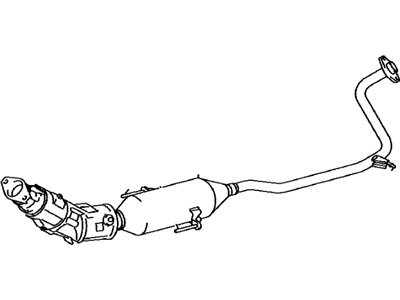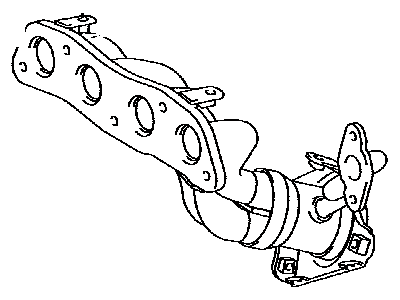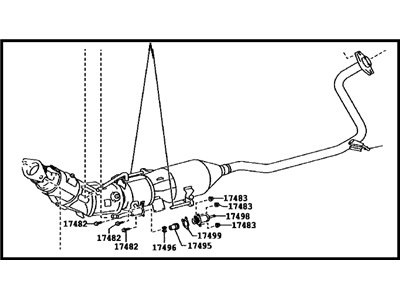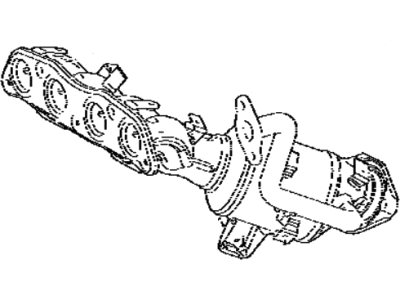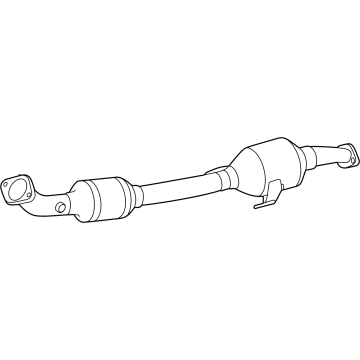

My Garage
My Account
Cart
Genuine Toyota Prius Catalytic Converter
Cat. Converter- Select Vehicle by Model
- Select Vehicle by VIN
Select Vehicle by Model
orMake
Model
Year
Select Vehicle by VIN
For the most accurate results, select vehicle by your VIN (Vehicle Identification Number).
23 Catalytic Converters found
Toyota Prius Front Exhaust Pipe Assembly
Part Number: 17410-21500$2221.97 MSRP: $3038.76You Save: $816.79 (27%)Ships in 1-3 Business DaysToyota Prius Front Exhaust Pipe Assembly
Part Number: 17410-37300$1687.03 MSRP: $2307.17You Save: $620.14 (27%)Toyota Prius Exhaust Pipe Assembly
Part Number: 17410-37B52$1053.61 MSRP: $1440.91You Save: $387.30 (27%)Toyota Prius Exhaust Manifold
Part Number: 17141-21120$203.57 MSRP: $291.91You Save: $88.34 (31%)Ships in 1-3 Business DaysToyota Prius Front Exhaust Pipe Assembly
Part Number: 17410-21261$1514.69 MSRP: $2071.49You Save: $556.80 (27%)Toyota Prius Exhaust Manifold
Part Number: 17141-37200$467.40 MSRP: $697.26You Save: $229.86 (33%)Ships in 1-3 Business DaysToyota Prius Front Exhaust Pipe Assembly
Part Number: 17410-21260$1514.69 MSRP: $2071.49You Save: $556.80 (27%)Toyota Prius Front Exhaust Pipe Assembly
Part Number: 17410-37160$1518.71 MSRP: $2076.98You Save: $558.27 (27%)Ships in 1-3 Business DaysToyota Prius Exhaust Manifold
Part Number: 17141-37150$190.58 MSRP: $273.27You Save: $82.69 (31%)Ships in 1-3 Business DaysToyota Prius Front Exhaust Pipe Assembly
Part Number: 17410-37B50$1053.61 MSRP: $1440.91You Save: $387.30 (27%)Ships in 1-3 Business DaysToyota Prius Front Exhaust Pipe Assembly
Part Number: 17410-37330$1858.70 MSRP: $2541.95You Save: $683.25 (27%)Ships in 1-3 Business DaysToyota Prius Exhaust Pipe Assembly
Part Number: 17410-37B72$812.43 MSRP: $1111.08You Save: $298.65 (27%)Ships in 1-3 Business DaysToyota Prius Front Exhaust Pipe Assembly
Part Number: 17410-37B70$812.43 MSRP: $1111.08You Save: $298.65 (27%)Ships in 1-3 Business DaysToyota Prius Front Exhaust Pipe Assembly
Part Number: 17410-37A30$812.43 MSRP: $1111.08You Save: $298.65 (27%)Ships in 1-3 Business DaysToyota Prius Exhaust Pipe Assembly
Part Number: 17410-37C60$1015.07 MSRP: $1388.20You Save: $373.13 (27%)Ships in 1-3 Business DaysToyota Prius MANIFOLD, EXHAUST
Part Number: 17141-37201$467.40 MSRP: $697.26You Save: $229.86 (33%)Ships in 1-3 Business DaysToyota Prius Front Exhaust Pipe Assembly
Part Number: 17410-37A00$1053.61 MSRP: $1440.91You Save: $387.30 (27%)Ships in 1-3 Business DaysToyota Prius Exhaust Pipe Assembly
Part Number: 17410-24440$867.46 MSRP: $1186.34You Save: $318.88 (27%)Ships in 1-2 Business DaysToyota Prius Exhaust Manifold
Part Number: 17141-37210$421.02 MSRP: $628.09You Save: $207.07 (33%)Ships in 1-3 Business DaysToyota Prius MANIFOLD, EXHAUST
Part Number: 17141-37211$561.07 MSRP: $837.75You Save: $276.68 (34%)Ships in 1-2 Business Days
| Page 1 of 2 |Next >
1-20 of 23 Results
Toyota Prius Catalytic Converter
If you are in demand for superior quality and affordable OEM Toyota Prius Catalytic Converter, then shop with us! We own a wide range of the reduced-priced genuine Toyota Prius Catalytic Converter. You can purchase in confidence as all parts come with a manufacturer's warranty. Any issues with our products? No need to worry as we have a hassle-free return policy to guide you every step of the way.
Toyota Prius Catalytic Converter Parts Questions & Experts Answers
- Q: What is the general description and maintenance procedure for a catalytic converter on Toyota Prius?A:Since Federally mandated warranties that would cover emissions-related components like the catalytic converter have been extended, then it is suggested that one consult a dealer service department before having to purchase a new converter at his or her own cost. Since it is at the front, it is mounted together with the exhaust manifold as a front catalytic converter. The catalytic converter serves as an emission control device added to the exhaust system to reduce pollutants from the exhaust gas stream, with two types available: there being the conventional oxidation catalyst which helps in reducing the amount of hydrocarbon and carbon monoxide and the three way catalyst which helps in lowering the concentrations of oxides of nitrogen, hydrocarbons and carbon monoxide. These models are fitted with three method catalytic convertors and the second oxygen sensor is positioned to rear of the convertor. The test equipment for a catalytic converter is very costly and complicated; those with this problem advise to seek the service of dealer or an authorized emission testing center for check up and repair. Whenever the vehicle is lifted to inspect or service under-body systems, Boilers and Engine convertors should be search for leaks to the metal's surface, corrosion, dent and other damage on the outside surface of the wings as well as the welds and flange bolts which fix front and rear ends of the convertors to the exhaust system. If there is any damage it is recommended that the converter be replaced. Although the catalytic converters do not tend to break often, they can become plugged up. If there is a possibility of having a restricted converter, then intake vacuum can be checked using vacuum gauge; it also determines the impact of a blocked exhaust. The steps include attaching a vacuum gauge to a source of intake manifold vacuum, letting the engine warm up, shifting the transaxle to PARK, and applying the parking brake. Before the tests, the vacuum reading at idle should be collected and recorded and immediately after that, throttle should be opened as close to full as possible and then closed entirely while vacuum readings are being collected. If the reading recorded after the fourth test is still one In-Hc below the idle reading, this could be a pointer towards a restricted exhaust system which might mean that the catalytic converter is probably plugged or that an exhaust pipe or a muffler could be restricted. While changing the catalytic converter, it is necessary to apply a spray on nuts of the exhaust flange studs prior to their removal, and then to disconnect the catalytic converter and the exhaust manifold; the process of connection is the reverse of the process of disconnection.
Related Toyota Prius Parts
Browse by Year
2024 Catalytic Converter 2023 Catalytic Converter 2022 Catalytic Converter 2021 Catalytic Converter 2020 Catalytic Converter 2019 Catalytic Converter 2018 Catalytic Converter 2017 Catalytic Converter 2016 Catalytic Converter 2015 Catalytic Converter 2014 Catalytic Converter 2013 Catalytic Converter 2012 Catalytic Converter 2011 Catalytic Converter 2010 Catalytic Converter 2009 Catalytic Converter 2008 Catalytic Converter 2007 Catalytic Converter 2006 Catalytic Converter 2005 Catalytic Converter 2004 Catalytic Converter 2003 Catalytic Converter 2002 Catalytic Converter 2001 Catalytic Converter
